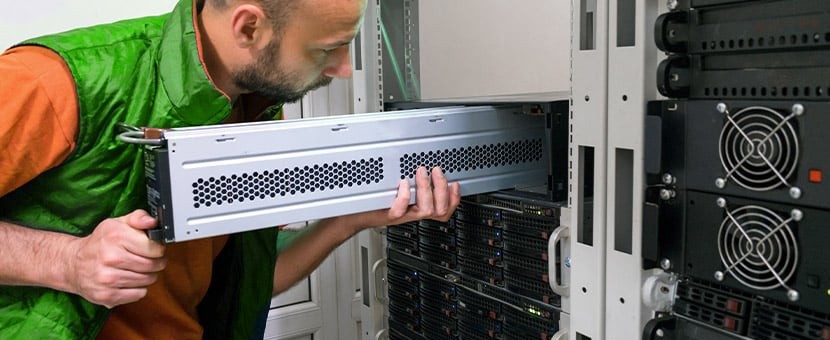SLA Battery: What It Is, How It Works, and How to Choose the Right One
Introduction
Sealed Lead Acid (SLA) batteries have become a cornerstone in power backup, industrial equipment, and mobile applications. From home UPS systems and security setups to boats, RVs, and industrial machinery, SLA batteries offer a reliable energy storage solution.
This guide aims to help both individual users and business decision-makers understand SLA batteries, compare them with other technologies, and make informed choices for purchase, maintenance, and replacement.
What Is an SLA Battery?
SLA stands for Sealed Lead Acid, a type of rechargeable battery in which the electrolyte is immobilized, eliminating the need for regular maintenance. Unlike traditional flooded lead-acid batteries, SLA batteries are leak-proof, safer, and more convenient for enclosed applications.
Main Types of SLA Batteries
- Absorbent Glass Mat (AGM) – Offers higher discharge rates and is commonly used in UPS, medical devices, and small vehicles.
- Gel Batteries – Uses a gelled electrolyte for deep-cycle applications, providing enhanced lifespan in repetitive discharge scenarios.
Key Applications of SLA Batteries
SLA batteries are versatile, supporting a wide range of users and industries:
- Home and Office UPS Systems: Provides backup power during outages.
- Security and Surveillance Systems: Ensures uninterrupted operation for alarms and cameras.
- Marine and RV Applications: Powers onboard equipment and starting systems.
- Industrial Equipment: Used in forklifts, floor sweepers, and backup power for machinery.
These applications highlight why SLA batteries attract both consumer (C-end) and business (B-end) users, as reliability is critical in all scenarios.
Advantages and Disadvantages
Advantages
- Maintenance-free and sealed design
- High safety due to spill-proof construction
- Lower upfront cost compared to lithium alternatives
Disadvantages
- Lower energy density and heavier weight
- Shorter lifespan compared to lithium batteries
- Less efficient in deep cycling applications
A clear understanding of these trade-offs helps users decide whether SLA batteries are the best fit for their needs.
SLA vs Lithium Batteries
While SLA batteries are a proven solution, lithium-ion alternatives are gaining popularity in both consumer and industrial applications.
| Feature | SLA Battery | Lithium Battery |
| Cycle Life | 300–500 cycles | 3000+ cycles |
| Weight | Heavier | Lighter |
| Energy Density | Lower | Higher |
| Cost | Lower upfront | Higher upfront, lower lifecycle cost |
| Maintenance | Minimal | Minimal, requires BMS |
For those exploring upgrades from SLA to lithium, consider our 12V LiFeLi Battery—a reliable, long-lasting lithium solution designed for comparable applications.
How to Choose the Right SLA Battery
When selecting an SLA battery, consider the following factors:
- Voltage and Capacity: Match the battery voltage (commonly 6V, 12V) and amp-hour (Ah) rating to your device’s requirements.
- Installation Space: Ensure physical dimensions fit the allocated space.
- Application Type: Determine whether the application is standby power, deep-cycle, or starting.
- Brand and Supplier Reliability: Trusted manufacturers ensure safety and consistent performance.
B-end users such as distributors or facility managers should also evaluate batch availability, warranty, and supplier support.
Maintenance and Care Tips
- Use a compatible SLA battery charger to prevent overcharging.
- Store in a cool, dry location to extend lifespan.
- Check for swelling, leaks, or corrosion periodically.
- Avoid deep discharges, especially in AGM and Gel batteries.
Proper maintenance ensures that SLA batteries last through their expected 3–5 year lifespan.
Replacement Cycle and Cost Considerations
SLA batteries typically need replacement every 3–5 years depending on usage intensity.
For high-demand or industrial applications, consider lifecycle costs, including:
- Replacement frequency
- Downtime risk
- Energy efficiency compared to lithium alternatives
Understanding these costs can help businesses and consumers make smarter decisions.
Frequently Asked Questions
Q1: Can SLA batteries be used in boats or RVs?
Yes, both AGM and Gel batteries are popular for marine and RV applications due to their sealed design.
Q2: What is the difference between AGM and Gel batteries?
AGM offers higher discharge rates and is better for short bursts, while Gel batteries excel in deep-cycle applications.
Q3: How do I choose the correct charger?
Always use a charger rated for SLA chemistry and voltage to avoid overcharging and damage.
Conclusion
SLA batteries remain a reliable and cost-effective energy solution for a variety of applications, from home UPS and security to industrial machinery and mobile power. Understanding their characteristics, maintenance needs, and replacement cycle helps users—both consumers and businesses—make informed decisions.
For users seeking higher performance, longer lifespan, or lighter weight, lithium alternatives such as our 12V LiFeLi Battery provide a compelling upgrade option.


